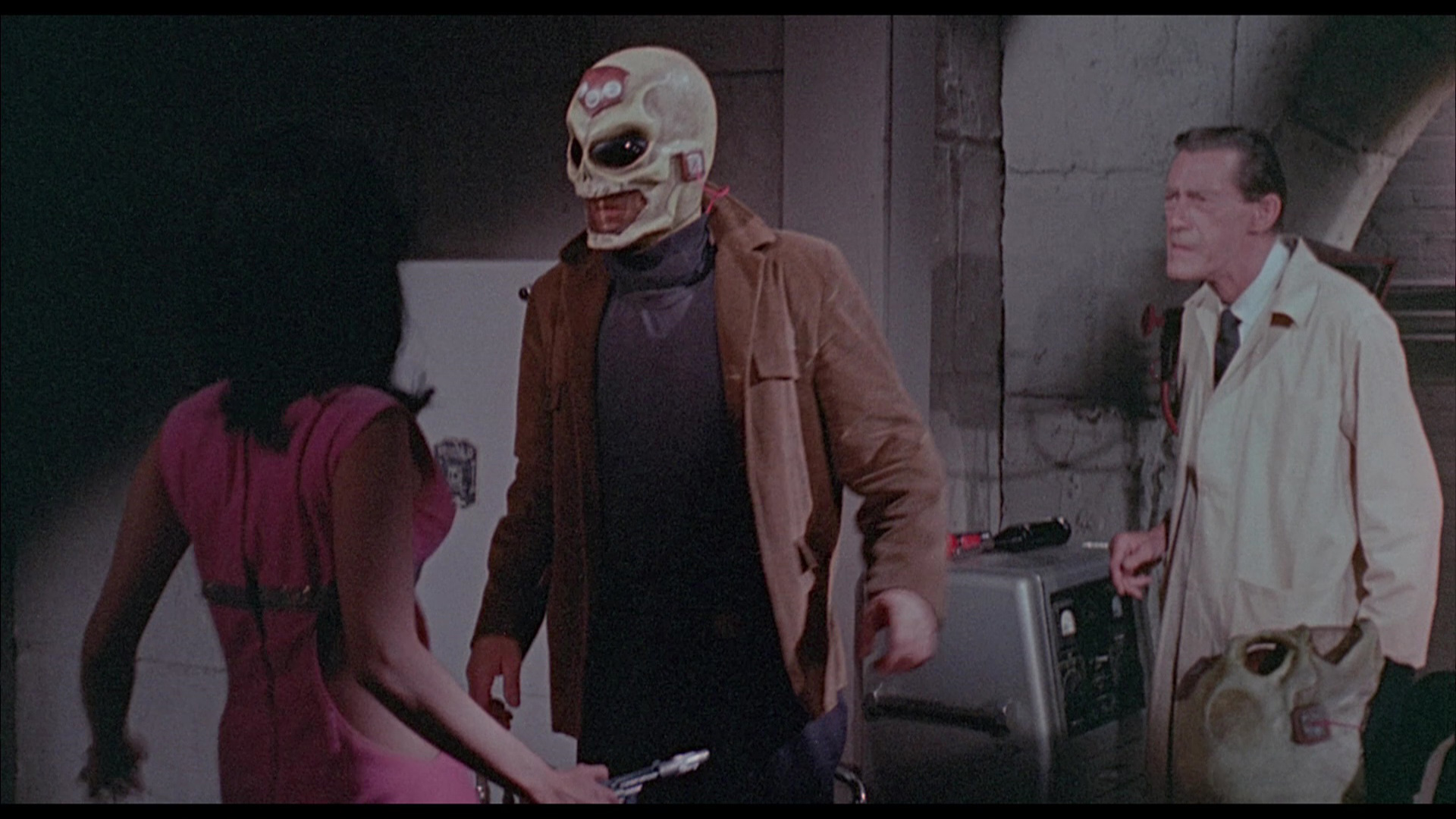

Color, 1968, 91m.
Directed by Ted V. Mikels
Starring John Carradine, Wendell Corey, Tura Satana, Tom Pace, Joan Patrick, Rafael Campos, William Bagdad, Victor Izay
Kino Lorber (Blu-ray & DVD) (US RA/R1 HD), Image (DVD) (US R1 NTSC) / WS (1.85:1) (16:9)
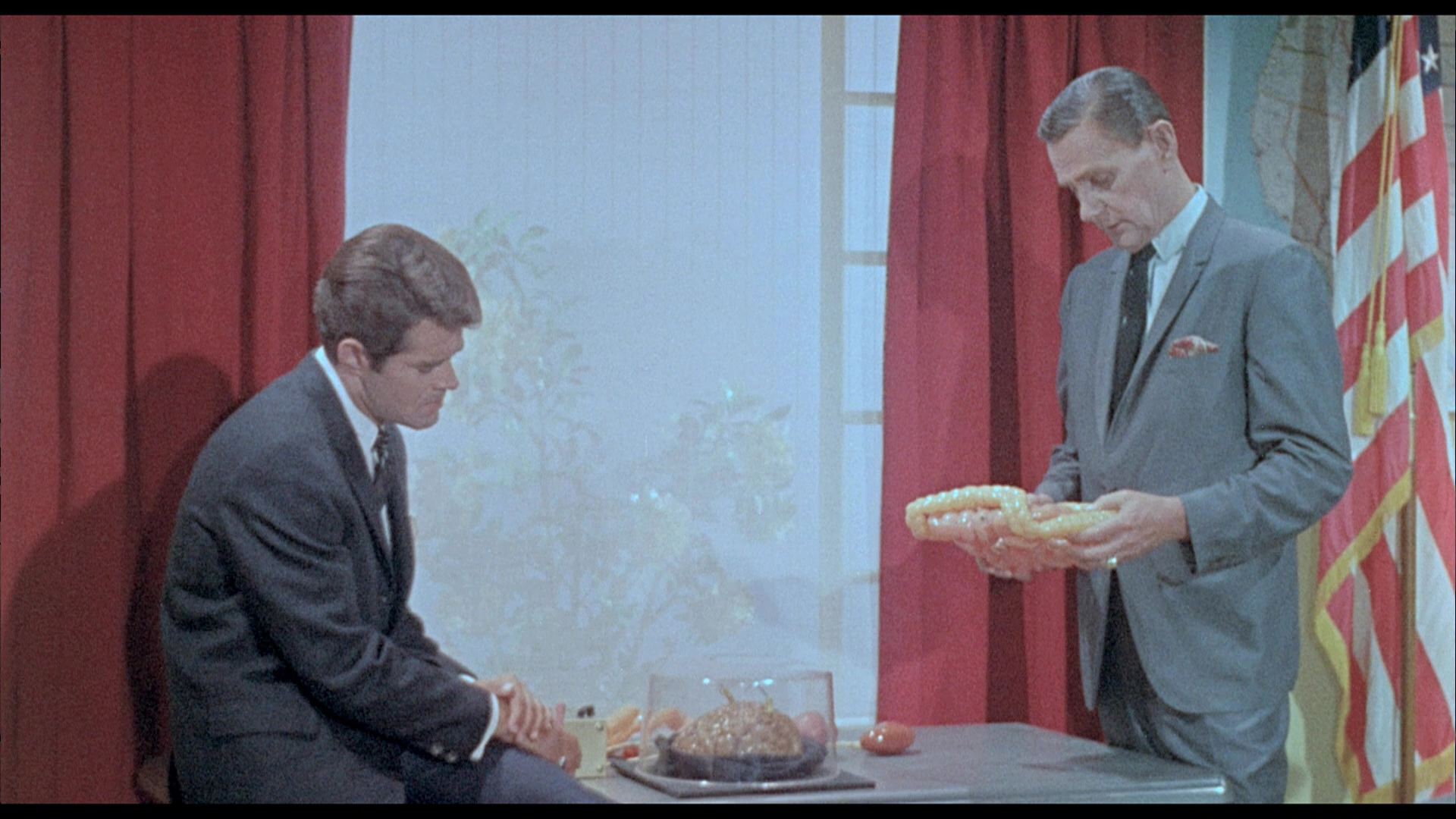
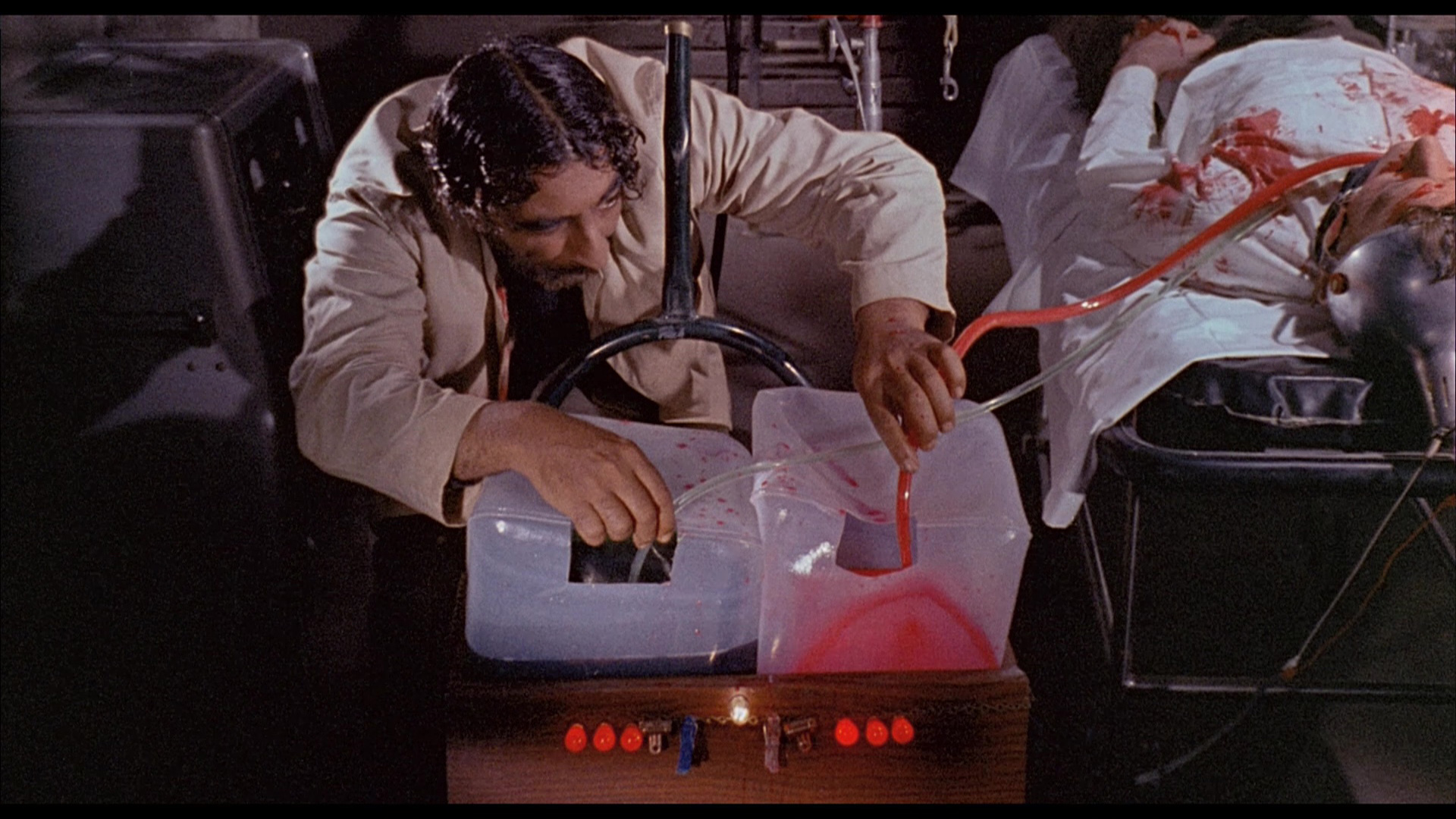 Often regarded as the most deranged and ridiculous of director Ted V. Mikels' no-budget horror quickies, The Astro-Zombies throws all pretense of coherent linear storytelling out the window in the first few minutes and never looks back. From the opening credits which fixate endlessly on twitching toy robots to the feverish and wholly incomprehensible climax, this film is truly one of a kind. Whether that's a good thing is, of course, up to you to decide.
Often regarded as the most deranged and ridiculous of director Ted V. Mikels' no-budget horror quickies, The Astro-Zombies throws all pretense of coherent linear storytelling out the window in the first few minutes and never looks back. From the opening credits which fixate endlessly on twitching toy robots to the feverish and wholly incomprehensible climax, this film is truly one of a kind. Whether that's a good thing is, of course, up to you to decide. 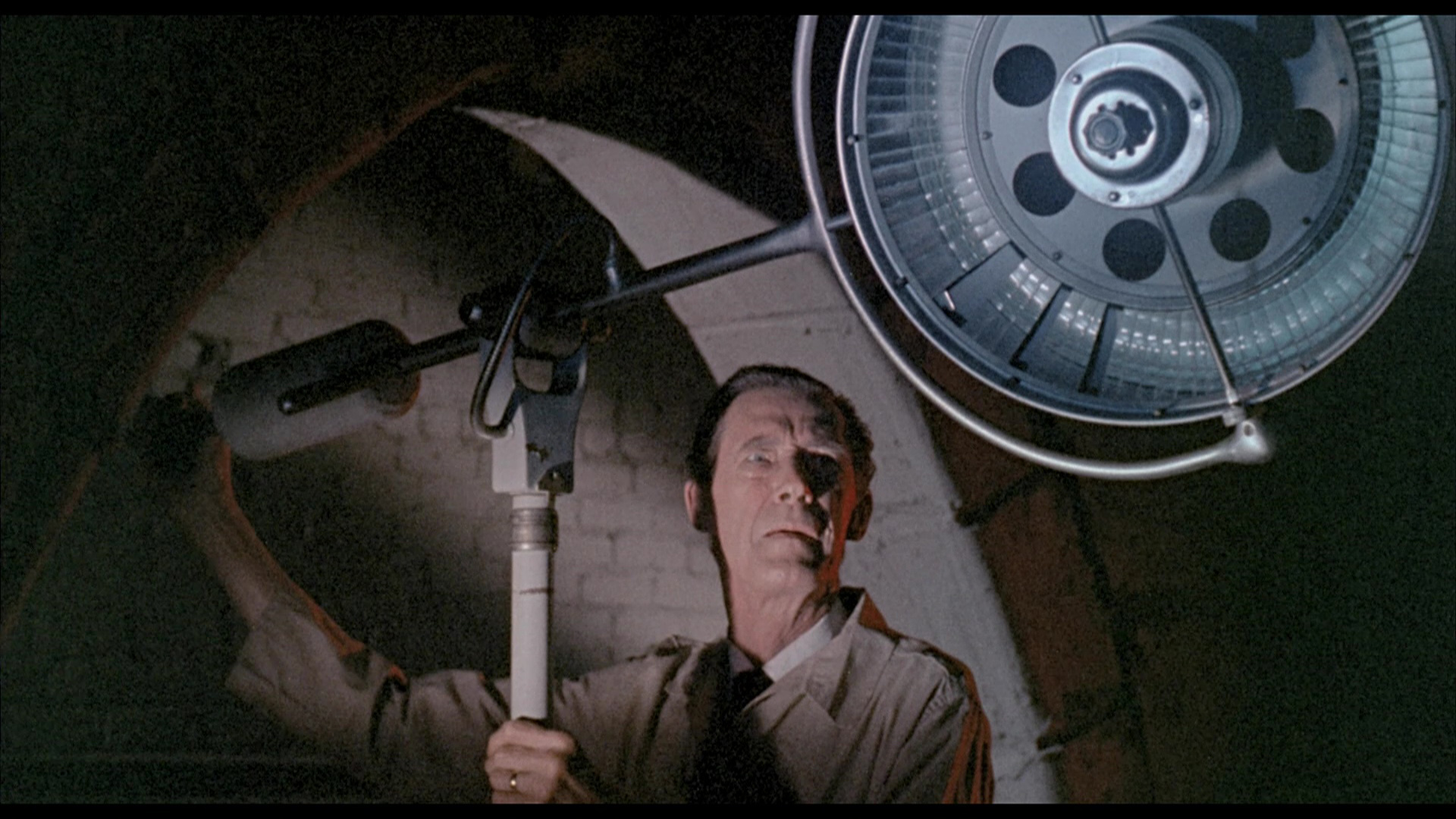 sets its sights on DeMarco's ex-assistant, Janine (Dr. Kildare's Joan Patrick), and a group of spies led by Tura Satana takes a keen interest in the doctor's experiments
sets its sights on DeMarco's ex-assistant, Janine (Dr. Kildare's Joan Patrick), and a group of spies led by Tura Satana takes a keen interest in the doctor's experiments 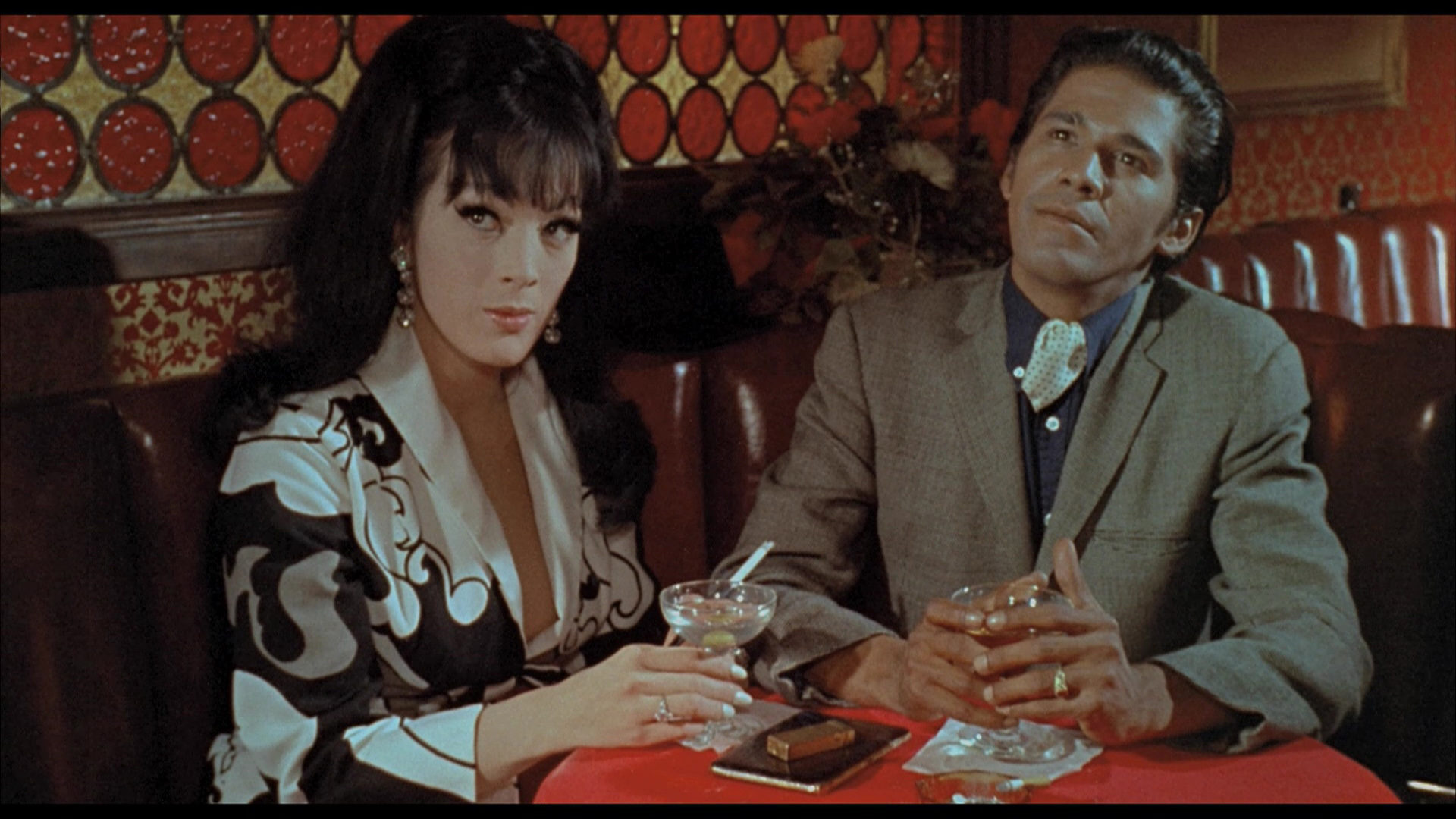 as well. All of our characters collide at the end, of course, but not before viewers are treated to an extended body-painted strip routine (complete with Mikels himself at the bongos) and one truly unbelievable incident involving solar energy drawn from a flashlight. See it if you dare...
as well. All of our characters collide at the end, of course, but not before viewers are treated to an extended body-painted strip routine (complete with Mikels himself at the bongos) and one truly unbelievable incident involving solar energy drawn from a flashlight. See it if you dare...  are damaged to the point of distraction, with scratches and speckles littering the screen before letting up for a much cleaner, more satisfying appearance. The full juicy trailer is also included in less pristine condition.
are damaged to the point of distraction, with scratches and speckles littering the screen before letting up for a much cleaner, more satisfying appearance. The full juicy trailer is also included in less pristine condition. 